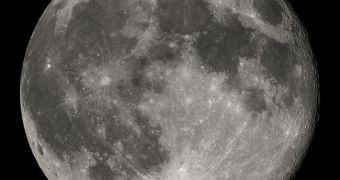Earth's natural satellite is apparently still capable of holding secrets from us even after decades if intensive studies, and a few visits. Researchers say that they have just discovered a new type of rock of the Moon, that can be found on its far-side.
The discovery was made as a lunar orbiter surveyed the other side of the Moon, and imaged some strange deposits, that did not resemble any other found on the the lunars surface.
Analysis of the images revealed that the stuff is a new type of rock, which was most likely deposited at those locations after having been created deep within the satellite's interior.
The odd mineralogy is the first new one to be identified on the Moon in decades, since the Apollo missions conducted by NASA brought back regolith (lunar soil) samples.
“These are very unusual areas,” scientist Carle Pieters said of the areas on the far-side of the Moon were the deposits were identified.
She presented the findings at the annual meeting of the Geological Society of America, which took place on November 2 in Denver, Colorado. Pieters holds an appointment as a planetary geologist at the Brown University, Science News reports.
The expert told researchers and media gathered at the conference that that the new rocks contain large amounts of the minerals orthopyroxene, olivine and spinel, which is why they are now called OOS.
The fact that such large concentrations of the mineral spinel exist within is a mystery in itself, given that all other regions of the Moon carry only trace amounts of the stuff, nowhere near the levels found in the new deposits.
These discoveries were made between 2008-2009, following lunar orbital flights carried out using the Indian probe Chandrayaan-1, which also featured some NASA instrumentation.
The Moon Mineralogy Mapper or M3 is capable of analyzing light being reflected off surfaces, thus determining the compositions of the materials underneath.
“It is the first fully capable spectrometer flown to the Moon,” explains Thomas McCord, a lunar expert based at the Bear Fight Institute, in Winthrop, Washington.
The M3 was also used in another landmark study last year, when Pieters and her team demonstrated that the Moon reflects the spectral signature of water from its surface.

 14 DAY TRIAL //
14 DAY TRIAL //